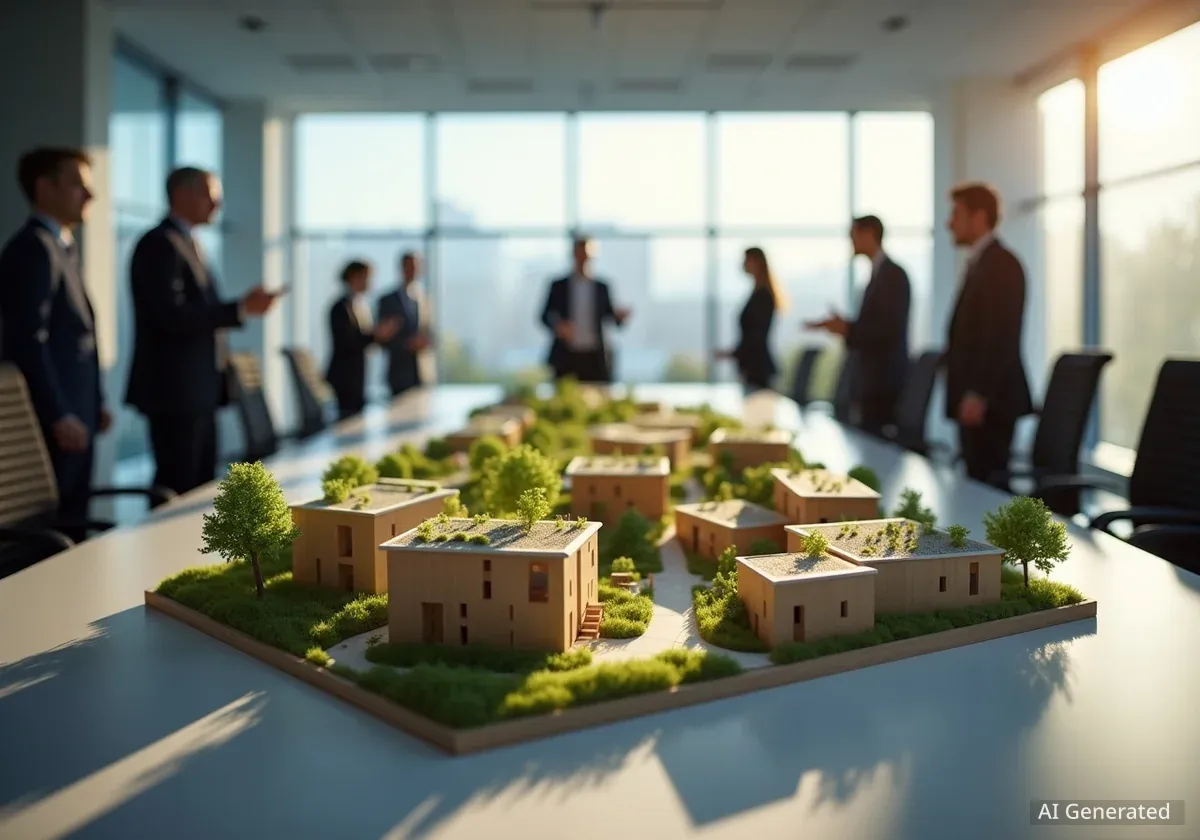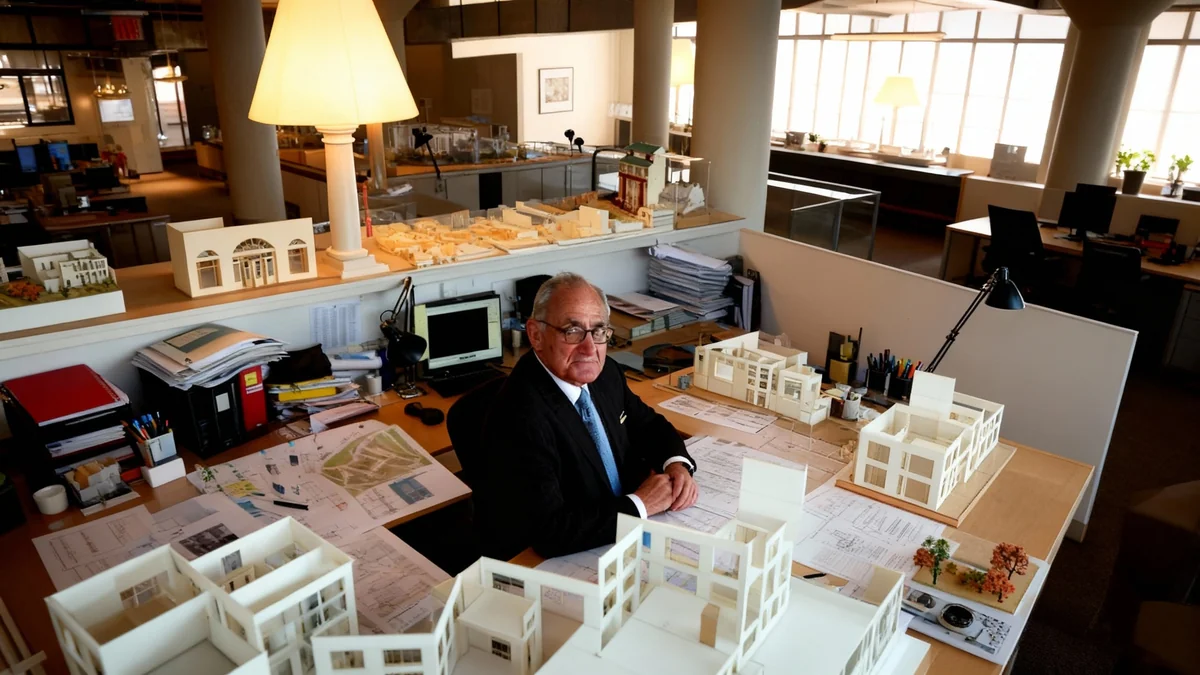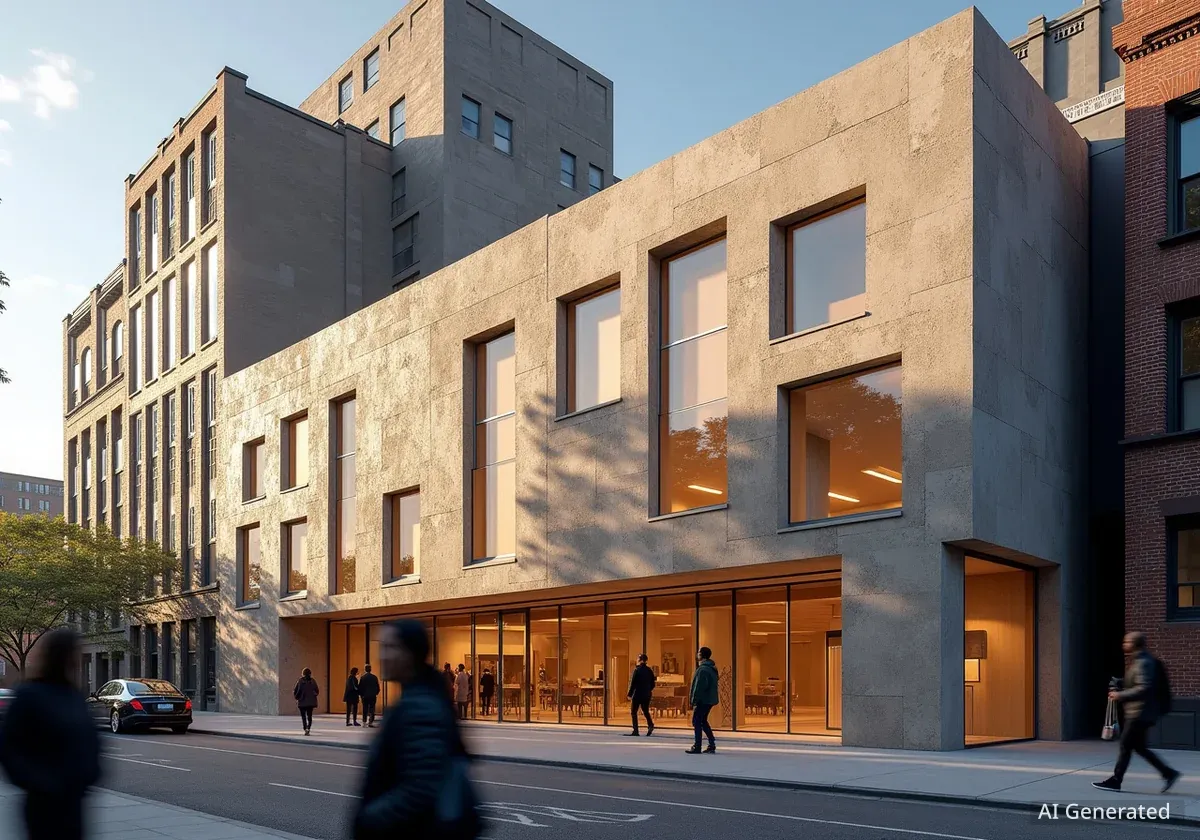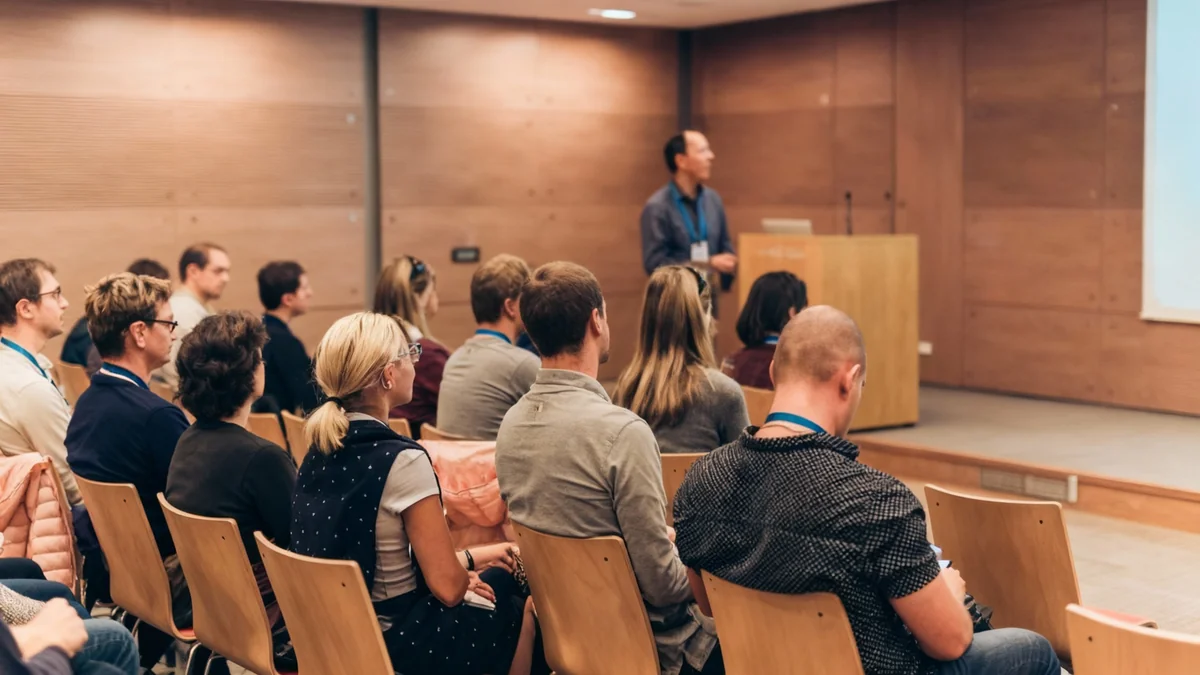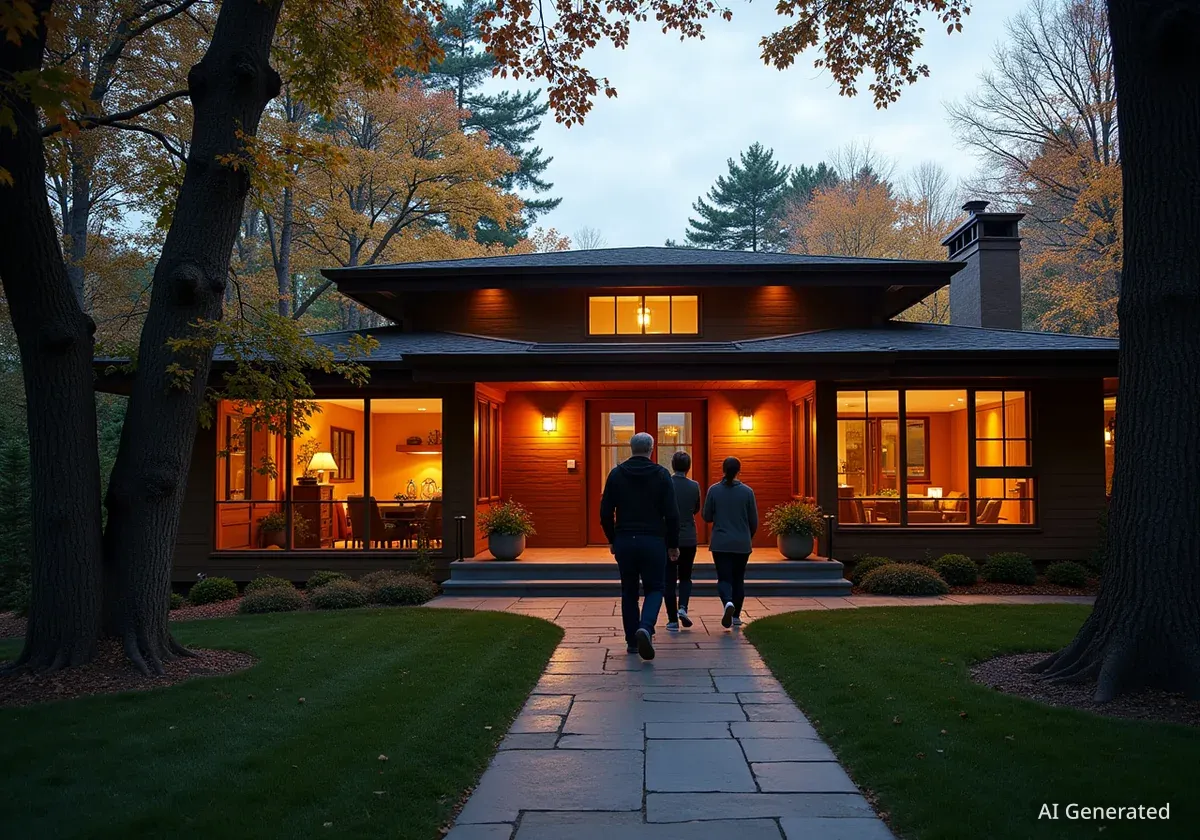Leading architecture school deans and directors across the United States have shared their priorities and insights for the new academic year. Themes include housing solutions, climate resilience, technology integration, and community engagement. These leaders outlined their goals, curriculum focus, and current concerns.
Key Takeaways
- Housing and co-living models are a major focus for schools like Pratt Institute.
- USC is addressing local challenges, including fire recovery and 2028 Olympics preparation.
- Sustainability, climate change, and low-carbon construction are central to many curricula.
- Several schools are exploring the role of artificial intelligence in architectural design.
- Notre Dame emphasizes traditional craft and deliberate rejection of AI as a formative influence.
Housing Solutions and Urban Development
At the Pratt Institute School of Architecture, Dean Quilian Riano highlighted a strong focus on housing. The school recently hosted Anacláudia Rossbach, Executive Director of UN-Habitat. Her presentation discussed the UN's New Urban Agenda and its housing goals. Pratt's curriculum extensively covers housing across various disciplines.
There is particular interest in co-housing models. These models explore how living arrangements are changing as people become more open to sharing spaces. This shift is driven by social and environmental impacts. Pratt collaborates with local groups, including the New York Housing Authority, on these initiatives. The school plans to expand its work on housing topics and partnerships, focusing on designing structures, spaces, and policies for shared living.
Fact: Housing Focus
Pratt Institute's architecture program dedicates significant curriculum space to exploring new housing models, including co-housing and collaborative living solutions. This includes partnerships with local organizations like the New York Housing Authority.
Addressing Local and Global Challenges
Dean Brett Steele from the USC School of Architecture stated that their goal is to prepare students for significant challenges. These challenges affect students, their disciplines, and the planet. The school aims to transform existing architectural practices. This includes challenging how architects work, think, communicate, produce, and share knowledge.
In the current climate of uncertainty, Steele believes architecture can embrace optimism and forward-looking change. This fall, USC Architecture faculty are integrating knowledge from their four disciplines:
- Architecture
- Landscape Architecture+Urbanism
- Building Science
- Historic Conservation
Curriculum reviews and course redesigns aim to make the school's work more relevant. Architecture is being redefined by the balance between disciplinary expertise and transdisciplinary collaboration. This raises questions about intelligent practice and smart design.
"In a year like 2025, with its many uncertainties and anxieties, it's possible our greatest project will be embracing the kinds of optimism, and forward-looking change, that I believe is the reality of a discipline like architecture."
Engaging Los Angeles
USC is directly engaging with Los Angeles, its global city environment. Studios are addressing post-fire challenges, working with communities affected by losses in January. The school is also collaborating with the Case Study 2.0 organization to rebuild Malibu and the Palisades. This topic will be explored in conferences and guest lectures this fall.
New courses will take more students into Los Angeles for 'walking' seminars. These seminars will directly engage with the city. Professional mentorship programs and fellowships with the USC Architectural Guild have also grown. These provide a vital link to professional experience in Southern California.
Context: LA's Challenges
Los Angeles faces unique challenges, including wildfire recovery and preparing for major events like the 2028 Olympics. Architecture schools in the region are actively integrating these real-world issues into their curricula and projects.
USC has partnered with LA Metro and others to organize ShadeLA. This design competition launched this month. It is open to students in the greater Los Angeles metro area. The goal is to design and build shade structures for the 2028 Olympics crowds.
Global Reach and New Destinations
Not all new initiatives focus on Southern California. USC's undergraduate Global Studies program includes a new destination in London. Directors at other locations have created new partnerships in Europe, the Mediterranean, and Asia. New graduate student destinations include 1960s land art sites in the American Southwest and a short course in Mexico City. These efforts are seen as essential for students' global lives and the school's future.
Sustainability and Climate Resilience
The Tulane School of Architecture and Built Environment has experienced significant student growth over four years. This led to hiring 26 new permanent faculty members. Six more are planned this year, with a similar number next year. Dean Iñaki Alday Sanz emphasized maintaining Tulane’s identity. The school focuses on pressing issues of climate change and social equity in the built environment. It also harnesses the talent of its faculty.
Tulane's reputation for educating professionals and engaging communities has expanded. It now includes a pursuit of strong research outputs. The challenge is ensuring these outputs address real-world dilemmas. This spans territorial, material, and human scales.
At the University of Oregon School of Architecture & Environment, Director Uli Dangel is excited about developing synergies across disciplines. These include Architecture, Interior Architecture, Landscape Architecture, and Historic Preservation. The focus areas are sustainability, resilience, community engagement, and low-carbon construction technologies, such as mass timber.
"Our students are curious, engaged, and full of potential, and I look forward to seeing our faculty continue to nurture their growth and talent. I hope we approach this new academic year with optimism, creativity, and a strong sense of community and mutual support for one another."
UCLA Architecture and Urban Design (AUD), according to Chair Mariana Ibañez, is driven by inquiry and curiosity. Research shapes its curriculum and future. This year, AUD's research studios address global questions like mobility, artificial intelligence, and housing. They also tackle local conditions in Los Angeles.
Projects include exploring sustainable infrastructure for the 2028 LA Olympics. A design-build studio, led by architect Tatiana Bilbao, envisions "forever housing" in Boyle Heights, LA. Ibañez looks forward to how designers and institutions combine diverse knowledge to create a more equitable and sustainable future.
The Ohio State University Knowlton School of Architecture is building its core curriculum around current pressing issues. Interim Director Rachel Kleit noted a commitment to climate-responsive architecture. The program prepares students with skills to meet these challenges.
Technology and Innovation in Education
At APDesign // K-State, Dean Michael McClure stated that the curriculum focuses on design excellence. This excellence aims to positively impact society by addressing built environment challenges at all scales. As a multidisciplinary college, K-State honors craft traditions and collaboration. It also embraces emerging technologies, from advanced fabrication to AI.
This term, faculty and students are connecting timeless design values with new tools. The goal is to tackle complex issues with creativity, responsibility, and vision for a better future.
Fact: AI in Architecture
The integration of Artificial Intelligence (AI) is a significant topic in architectural education. Some schools are embracing it for streamlining design processes, while others, like Notre Dame, are deliberately limiting its influence in creative endeavors.
Dean Frederick Steiner from the University of Pennsylvania Stuart Weitzman School of Design believes AI will revolutionize architecture and planning. It also promises to transform historic preservation and fine arts. For a Penn capital project, a renovation and expansion of an 1892 building, over 2,000 brick options were considered. Generative AI could streamline this by analyzing materials based on performance, aesthetics, energy efficiency, and compatibility.
However, Penn's primary focus is "organic intelligence." Faculty pioneered strategies for understanding natural systems decades ago. The school continues to build on these and expand investment in cultural exchange and community engagement. Steiner emphasizes the importance of dialogue and balance in stewarding Earth.
UC Berkeley’s College of Environmental Design is prioritizing the role of technology and computation. Dean Renee Chow stated their goal is for students to become critical users of these tools. To support this, the college is hosting a public lecture series, "Technology for a Sustainable Tomorrow." Speakers are from many disciplines. A new first-year course is also in development to embed this awareness early in student education.
Embracing Craft and Intentional Pedagogy
At the Cranbrook Academy of Art Architecture department, Interim Architects in Residence Elise DeChard and Gina Reichert are interrogating the future of architectural education. They continue Cranbrook's legacy of "joy in making." This means endless experimentation, critical engagement, and seeking inspiration beyond existing boundaries.
The pedagogy emphasizes planting seeds and tilling the soil as cultural and ecological stewardship. It also focuses on the entrepreneurial role of the architect and creating a desired future. Cranbrook Architecture is a place where new ideas take shape, and possibility is the expectation.
Dean Michael Speaks from Syracuse Architecture highlighted an exciting month of classes and events. He noted five visiting critics leading special option studios:
- Hernán Díaz Alonso (HDA-X) and Stephen Zimmerer (Syracuse Architecture) teaching "The Box/Casa House: A Mutant Archetype," reimagining domestic architecture.
- Ali Chen (Ali Conchita Chen) leading "Common Grounds," redesigning a coffee shop for the University’s Florence campus.
- Pablo Sequero (salazarsequeromedina) teaching "Seaside Adaptations: Between Publics, Leisure and Infrastructure," exploring Miami's coastal infrastructure in the context of climate crisis.
- Ashley Bigham and Erik Herrmann (Outpost Office) teaching "First, Color," positioning color as a primary design agent.
- Fei Wang (Syracuse Architecture), Nan Wang (URSIDE Design), and Yiming Wang (Wang Yiming Studio) leading "Metamorphosis of the Phoenix: The Confluence of Art, Architecture and Landscape," exploring art, architecture, and environment in response to ecological challenges, including travel to Taliesin West and Arcosanti.
Finally, Dean Stefanos Polyzoides from the University of Notre Dame School of Architecture expressed pride in their school's intentional pedagogy. This pedagogy, documented in a book by the faculty, guides both undergraduate and graduate student work. He noted a cooperative spirit among the 52-member faculty.
Polyzoides highlighted their deliberate rejection of AI as a formative influence in creative endeavors. Instead, they emphasize in-depth teaching of built environment history and theory. They also focus on construction technologies, empathy for students, learning by doing, and cross-departmental research.
Students engage in hand drawing and watercolor rendering. They connect projects to historical wisdom. They work simultaneously on architecture, urbanism, and landscape architecture. Reports from year-long studies in Rome and global travels inspire them. They engage with civic, residential, and commercial projects. They aim to become excellent architects in practice and service to society. They reject performative protagonism and support each other's learning.
Polyzoides believes Notre Dame has moved past "obsessive starchitecture." The school operates on the assumption that individual project design aims to create diverse cities and steward nature. This makes them worthy of human flourishing. He stated that adult architects are responsible for the current urban and environmental issues. Notre Dame teaches a new generation to recognize past design mistakes and commit to changing the built world, one beautiful, durable, and resilient project at a time.
This collective outlook from architecture deans paints a picture of an academic field deeply engaged with contemporary issues. They prepare students to design a more sustainable and equitable future.
